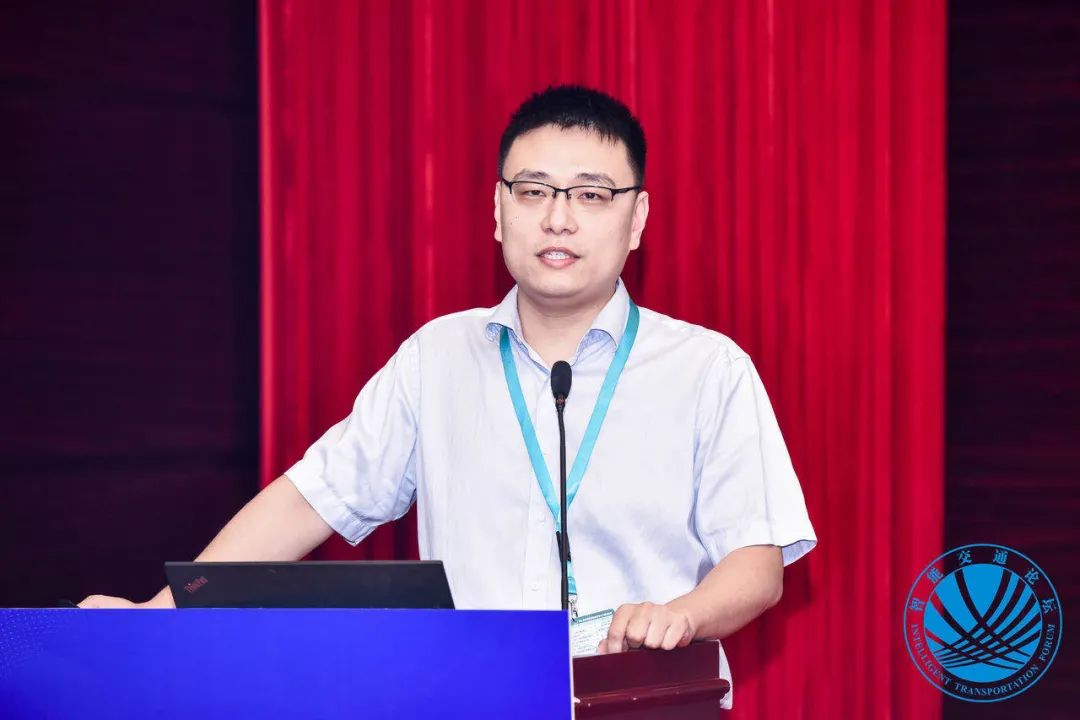

iFLYTEK's road to smart transportation practice
On the morning of September 13, the 17th China (International) Urban Intelligent Transportation Forum hosted by the Shenzhen Intelligent Transportation Industry Association was successfully held. Tan Chang, Vice President of the Smart City Business Group of iFlytek Co., Ltd., delivered a speech titled "iFlytek The keynote speech of "The Practical Road to Smart Transportation", the following is the transcript of the speech (slightly abridged):

Tan Chang, Vice President of Smart City Business Group of iFlytek Co., Ltd.
I am very happy to be able to discuss with many experts and leaders about iFlytek’s practices in the transportation field as an artificial intelligence company.We are more from a communicationA new entrant in the transportation industry, a technology company, thinks or explores how artificial intelligence can play its corresponding role in smart transportation and intelligent transportation construction.
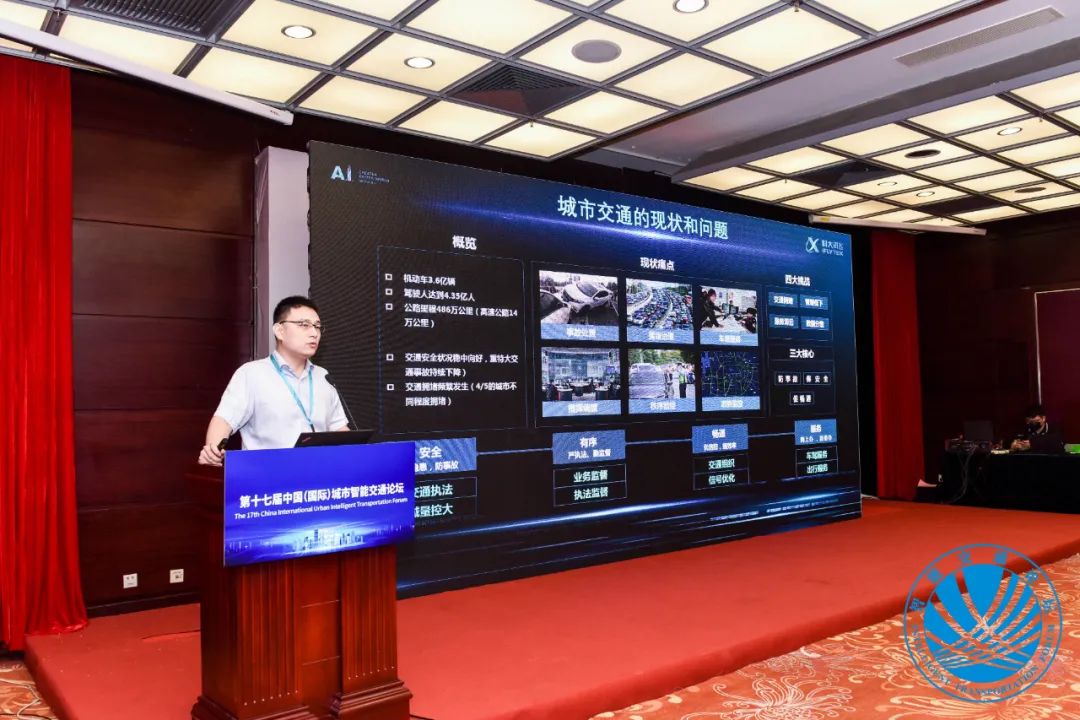
China's transportation development to this day hasThere are 360 million motor vehicles, corresponding to 4.86 million kilometers of highway mileage. A very important feature is that there are more vehicles and fewer roads. The occurrence of congestion and traffic accidents is also increasing day by day. Our country’s core demands for traffic management are nothing more than focusing on Focusing on the four points of safety, order, smooth flow and service, we will provide travelers, public transportation participants, pedestrians, and managers with better or more efficient management methods and travel methods.
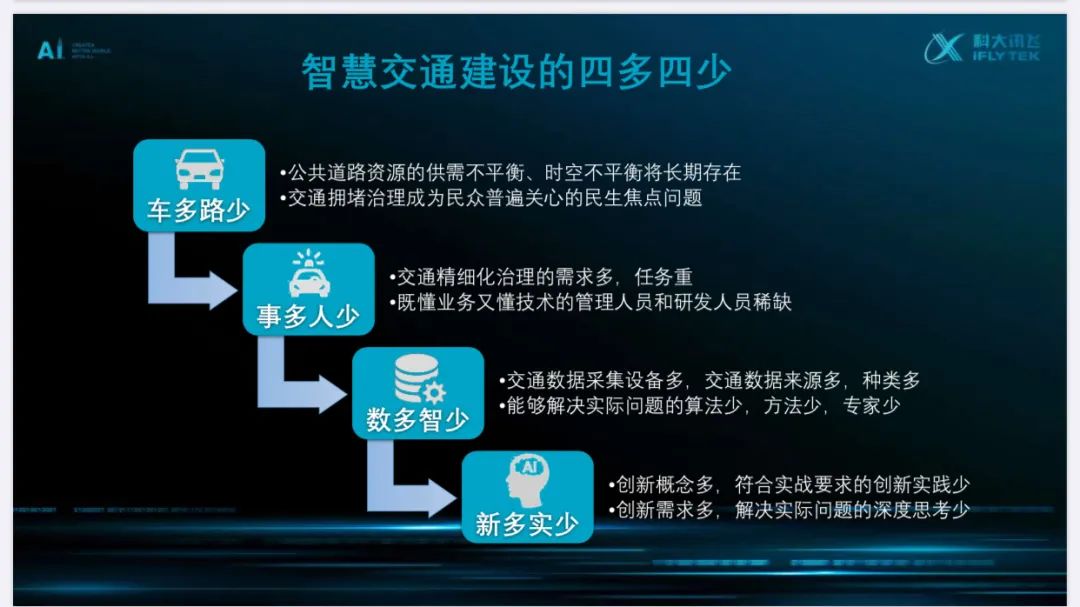
I summarize this general background as four more and four less.The first is that there are many cars and few roads.Although China's infrastructure construction is very strong, the supply and demand of our public transportation, especially road resources, is unbalanced in urban centers, first- and second-tier cities, third- and fourth-tier cities, and suburban areas. The imbalance between supply and demand of time must exist for a long time.
The second is that there are too many things to do but too little.Too much meansIn the process of traffic management, there are accidents, congestion, daily traffic order rectification, congestion and chaos management,On the one hand, the lack of personnel is due to the small number of managers themselves, and on the other hand, there are few professionals in the transportation field.
The third is that more numbers lead to less wisdom.The scale of investment in infrastructure is large, the installation of field equipment is large, and the collection of basic traffic dataThe set size is also very large, but there are few experts, few algorithms, and few methods to solve practical problems. In recent years, the Traffic Management Bureau of the Ministry of Public Security has been advocating competitions on techniques and methods to produce corresponding traffic data., why do we do this kind of competition? becauseThere is a lot of data and few methods available to solve the problem.
The fourth is that there is more but less in reality.There are many innovative concepts, but few innovative practices that meet practical and management requirements.The Shenzhen traffic police have been talking about taking left turns for three or four years, but how many places across the country can they use it?Why don't you dare to use it? This method is too complex and has high professional requirements, so not many professionals use it.There is a lot of demand for innovation. If you build a brain today, an eye tomorrow, and a heart the day after tomorrow, will it really solve the problem of traffic congestion?There is little in-depth thinking to solve problems.Our planning, management, and construction are in different departments, resulting in little in-depth thinking and in-depth connectivity.
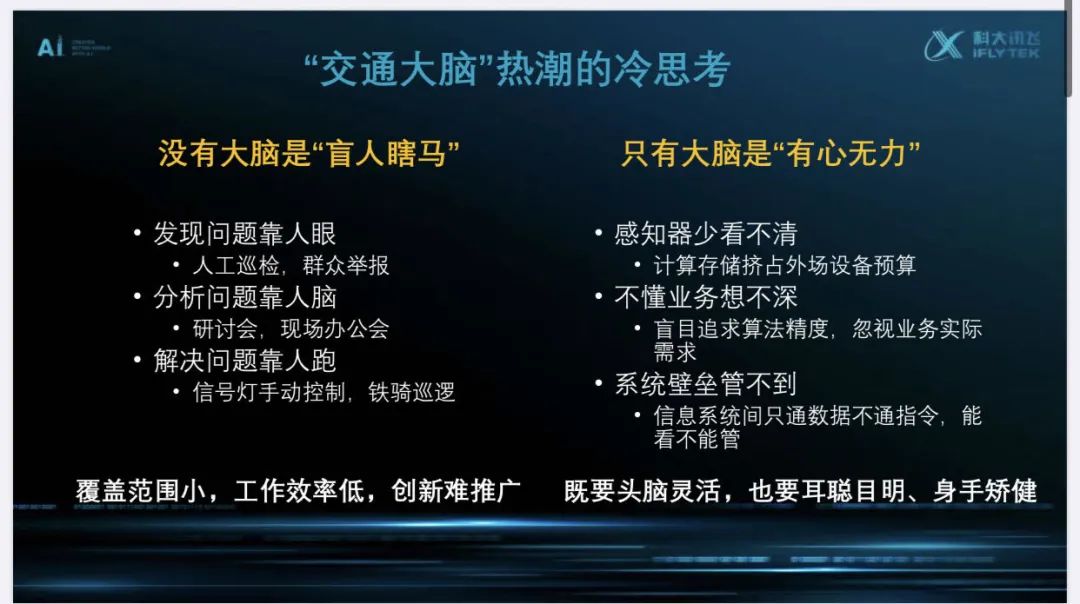
Nowadays, many cities are building brains. Without brains, everyone is blind. But with only brains, it is useless if you don’t have outdoor camera servers. If you separate the brain from the outdoor equipment and put them in opposition, there will be too few outdoor equipment. If you can’t see clearly, you’ll never know what’s happening on the road without equipment. If you don’t understand the business and just design the algorithm, you will be judged to be useless in the business in the end. The algorithm still needs to be incorporated into the business. In the end, I found that many brains were built, but they were all separate brains, and no one could connect to anyone else. So now we not only need to have a flexible mind, but also have good ears and eyes in the field facilities, as well as strong management and control skills. We must be able to see, calculate, and manage, so that we can solve real problems.
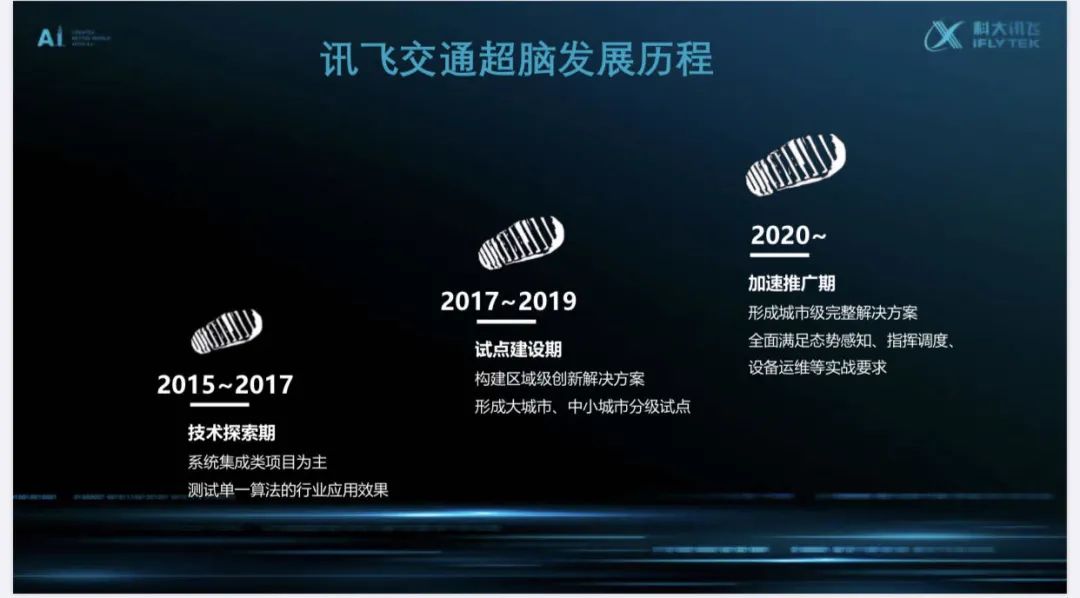
iFlytek is a new player in the field of intelligent transportation. We started to build intelligent transportation projects in Anhui Province in 2015. At that time, we were engaged in the integrated urban and rural intelligent transportation construction in Bozhou and some pilot area projects in Hefei. In this process, we We tested many excellent algorithms that we imagined at the time, including the algorithms mentioned in many traffic engineering papers at the time. The final results were terrible. Most of the algorithms were idealized, or could only solve the problem of a specific single intersection. . Later, it was said that linkage and coordination must be done, and the business system and control system must be built through the brain. We spent two years from 2017 to 2019 on a pilot project at 67 intersections covering an area of 15 square kilometers in Hefei City. We managed these 67 intersections well and then summarized some insights and experiences.
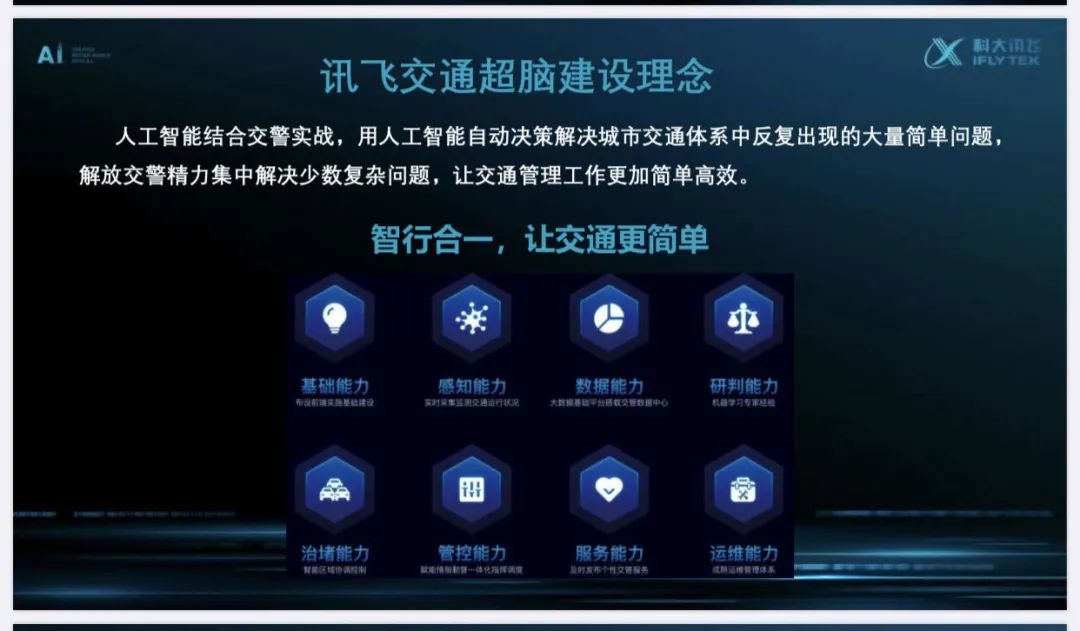
The concept is to integrate intelligence and mobility to make transportation simpler. Simple for whom? It’s simpler to be a human being. How can it be simpler? It must be artificial intelligence + transportation services, and artificial intelligence must serve the actual needs of transportation. We can replace this artificial intelligence with any new ideas and new ideas. You can test these things in practice before we say whether it works, the purpose of it, and the purpose of it. What the guarantee standard is is to simplify people's work.
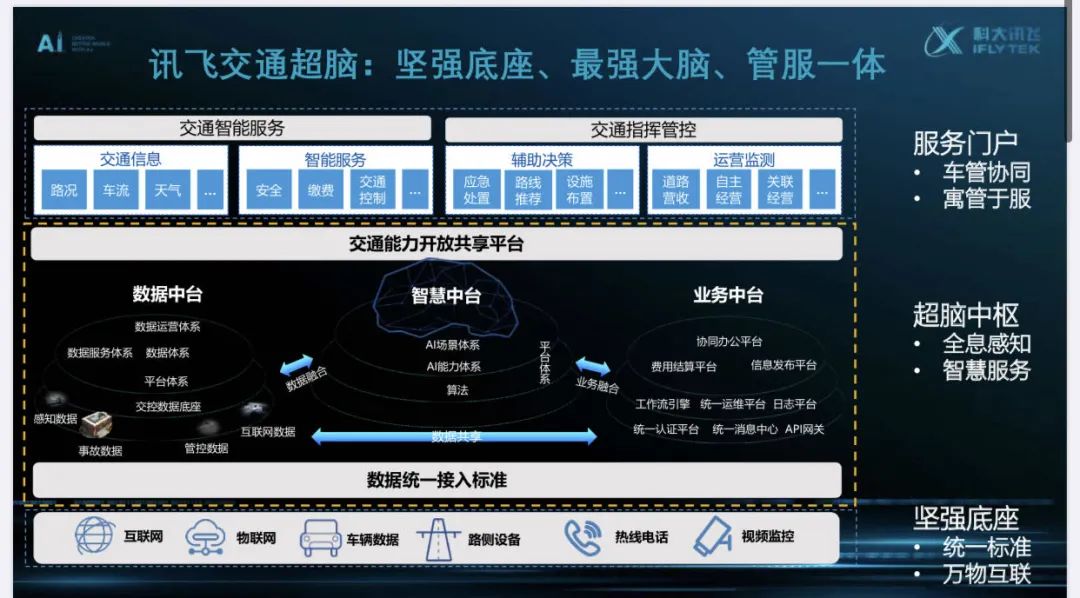
We talked about four abilities last year, and later found that these four abilitiesStrengths are both data capabilities and software capabilities.We have made some adjustments this year. The first one is infrastructure.This is the ability of any smart transportation company to directly promise the results to the owners and the city with confidence. How high should your field facilities and equipment be installed? Where should they be installed? At an intersection.To install several units, you need to come up with standardized construction logic.Perception and data are commonplace. You need to be able to perceive, analyze and process data. The purpose of analysis and processing is to judge the traffic situation of the entire city, and the purpose of judgment is to control congestion.There must be control measures to deal with congestion.How all of this can run healthily and regularly depends on service and operation and maintenance.Many places have done a good job in operation and maintenance. Equipment from 10 years ago is still running as usual. This is also a matter of improving investment efficiency. From the construction of infrastructure to the normalization of operation and maintenance, a good closed loop is formed.
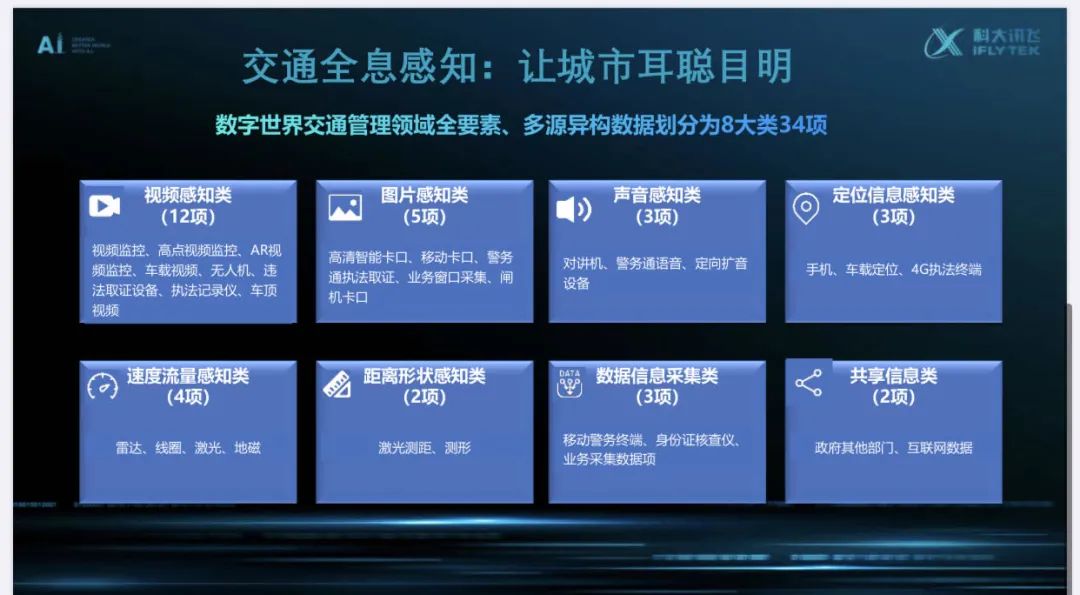
Under this concept, our transportation super-brain solution must have a strong base, a true central nervous system, and management and service means. I won’t go into details here. Everyone is familiar with it. At the bottom are the Internet of Things, the Internet, and all sensing and control devices. In the middle is the middle platform. The concept of middle platform can be abstracted into several. One is the data middle platform, which is all The common problem of data, the second is algorithm middle platform, artificial intelligence middle platform. If our data and algorithm are strongly coupled, it will definitely fall into the application. We must decouple our data and algorithm and separate the business. Logic and business processes are decoupled, so that the above integration is natural. With Ultrain, smart perception and smart services can be realized. Finally, services can be pre-managed in the above service portal, and a management, control and service system can be established.
We have now formed a complete product system of solutions. Let me introduce our ideas to you.
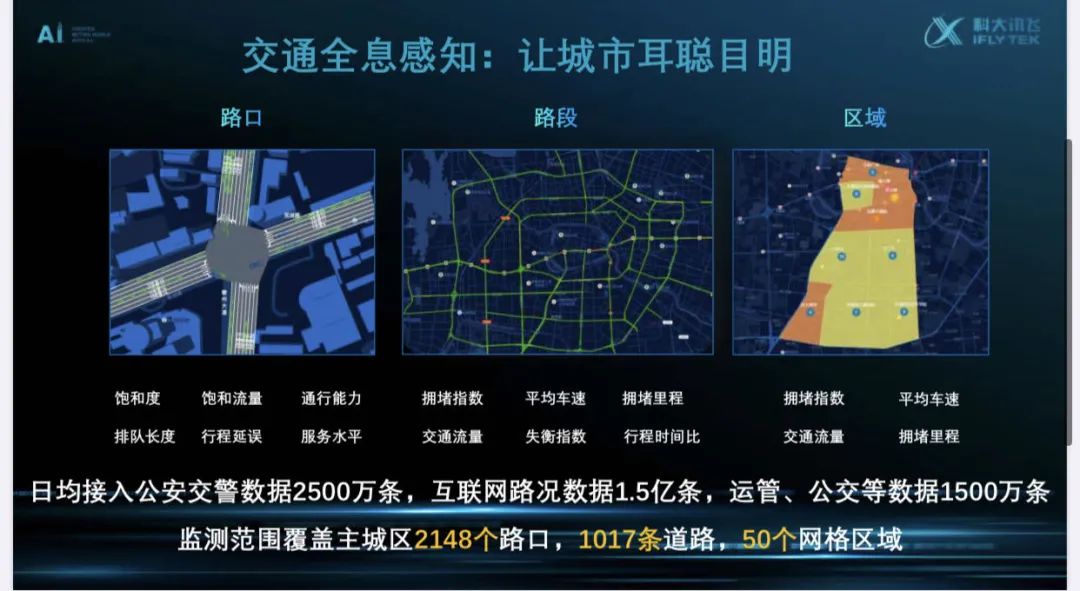
The first is holographic perception, which includes intersection level, road section level, and regional level. For indicators of intersections, road sections, and regions, we have national standards, landmarks, corporate standards, and industry standards. Everyone knows how to calculate. How to calculate accurately depends on whether the data you receive is complete and real-time. Now we have comprehensive awareness and management of Hefei’s 1,010 roads and 50 grid areas.
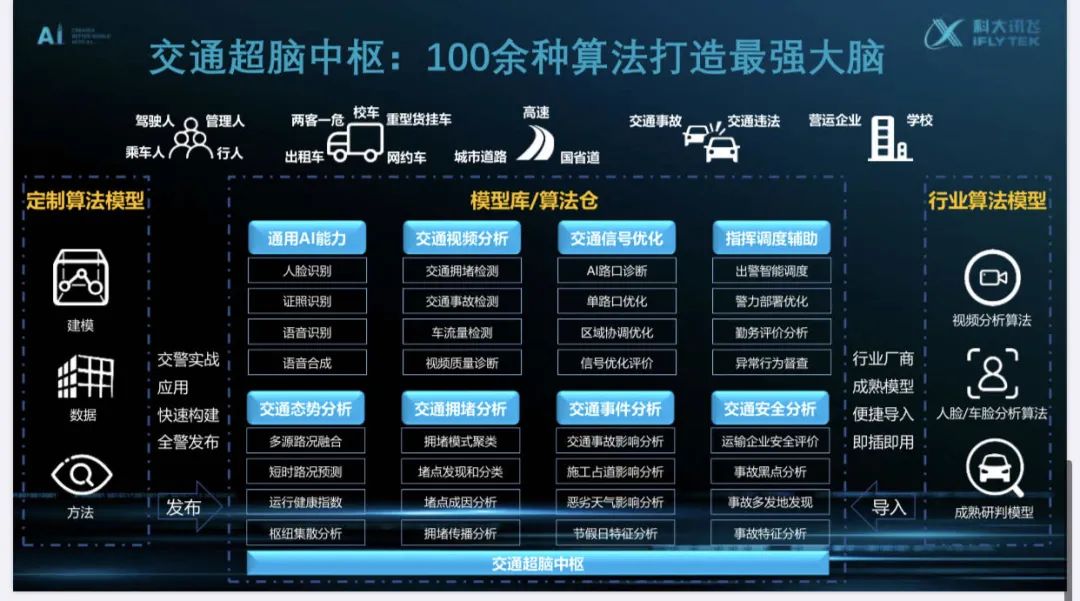
The basis of holographic perception is algorithms. We have summarized more than 100 algorithms from our practice in the past few years. These 100 kinds are the most commonly used, combined with our previous data. For example, to evaluate road congestion and traffic conditions, there are corresponding Internet traffic data, traffic flow statistics, intersection electric warnings, and device-based video traffic analysis algorithms. Many of the algorithms here are for one thing. , which is our road traffic capacity and real-time computing and analysis to serve. These different data sources also rely on an algorithm, which is the planning and statistical algorithm of multi-dimensional traffic flow data. In the end, it is shown that no matter which data source comes from our map, it is the road congestion and traffic capacity. All algorithms They are all designed to solve specific problems.
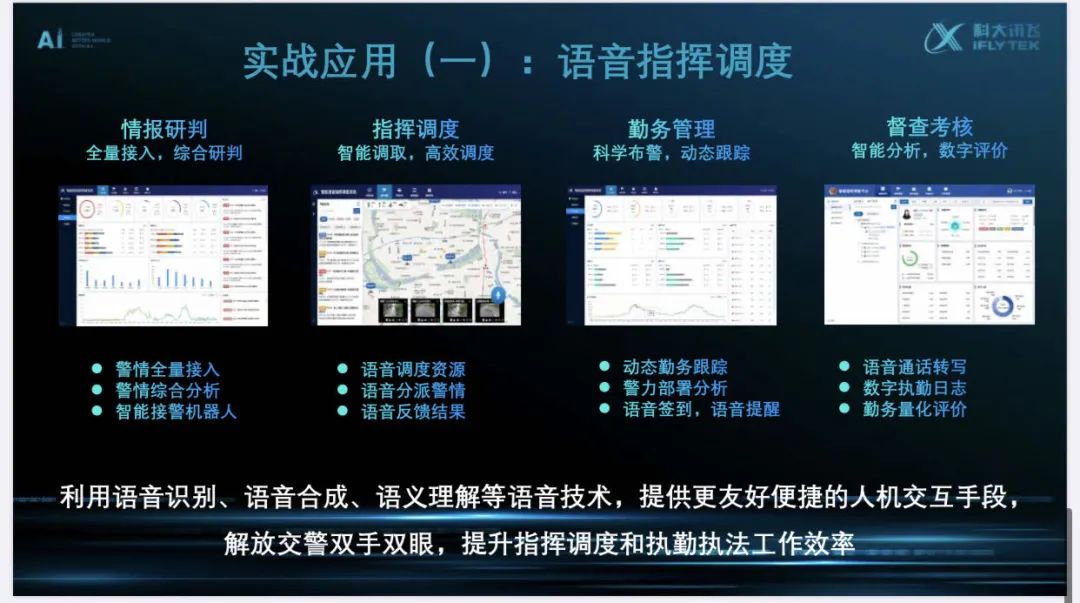
Once you have a basic base, you can build a richer set of applications. The actual operation is command and dispatch. Now everyone is unconsciously using iFlytek's technology. When I came last year, I walked around the booth below. Many manufacturers now have voice functions in their equipment, all using iFlytek's technical support. There is a popular saying among traffic police that command and dispatch rely on shouting. Can shouting be made easier and more convenient by integrating voice technology with command and dispatch?
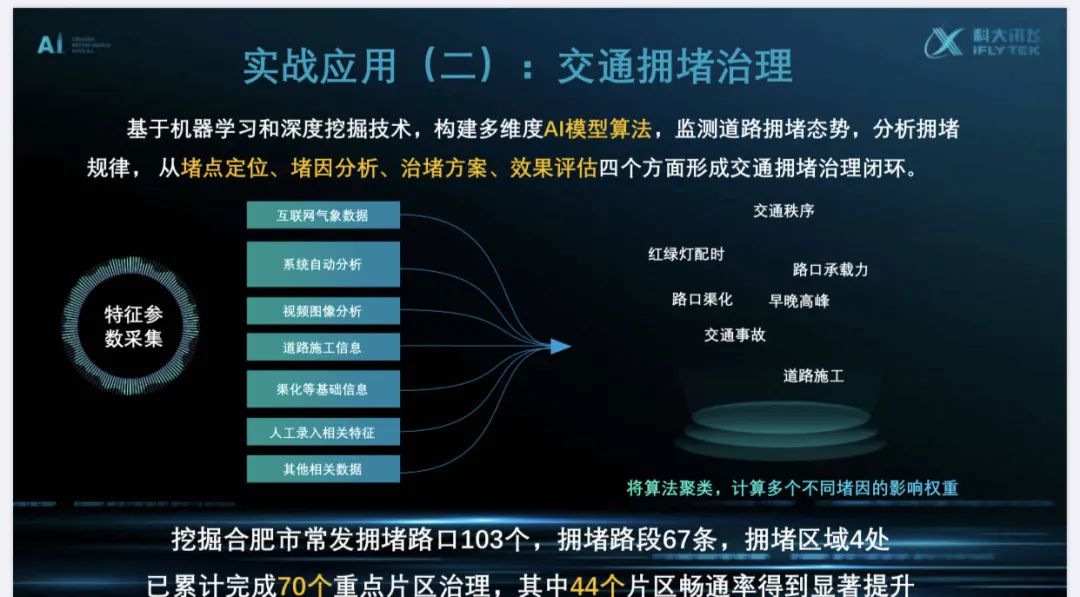
To control traffic congestion, we need to consider the location of congestion points. Holographic sensing can analyze the causes of congestion. We can find basic traffic conditions, congestion control plans, and evaluation of effects. In the past few years, iFlytek has helped Hefei find more than 100 congested intersections, and the treatment plan is also very simple. Through our signal optimization, the reorganization of road facilities, and even the improvement of the basic conditions of the roads, Hefei has basically solved the problem. Problems with most of the roads.
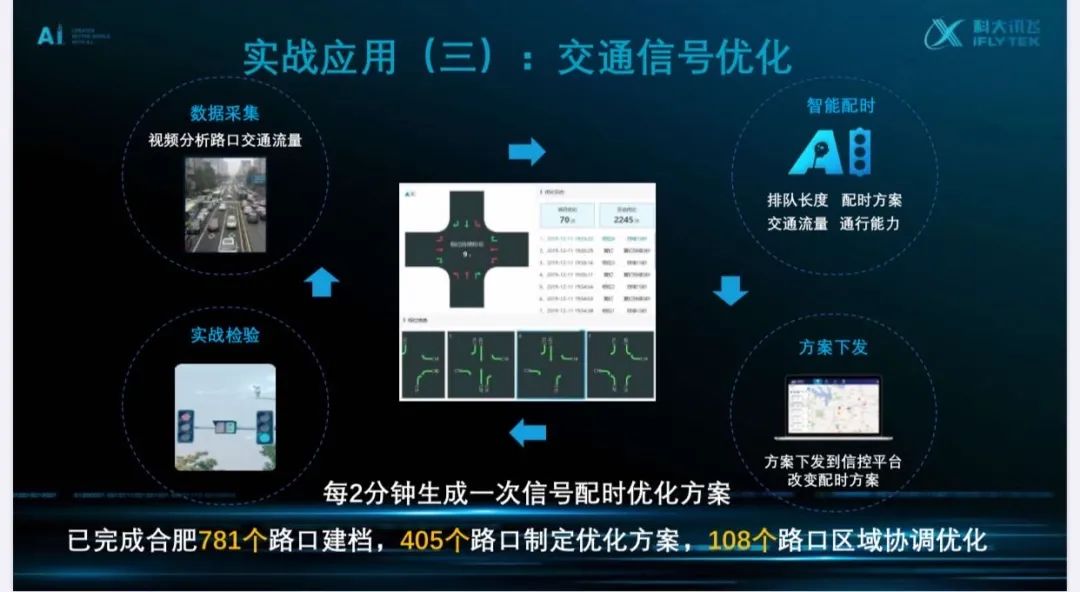
Communication signal optimization, this is not expanded at all. In fact, it is the same. When we do data and artificial intelligence, it is mainly a closed-loop process, and in this closed-loop process, the effect can be improved in a closed-loop manner.
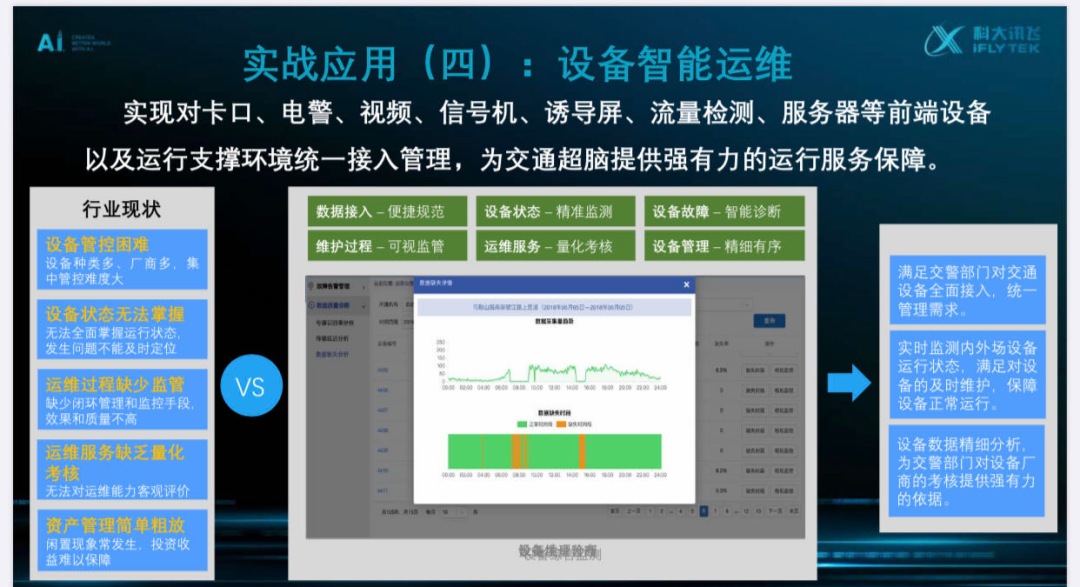
There are about 30,000 outfield devices and more than 1,000 infield servers in Hefei City. How to manage so many devices and servers?IthemCanbyforlinkNetwork live equipment datapassEvaluate delivery qualityestimate,set upPreparewhetherNormallynet,forData totalIt's intermittentofEquipment failureBarriers can also be donesome statusrepair.recentalsoexistresearchstudyhowBundlevideo instituteThe facilities collectedprepared status, such asguardrailHave you been hit by a car? RedGreen light, right?bright,fromvideo camerainanalyze it well and putAIAlgorithms and operation and maintenance of equipment and facilitiesprocess combined.
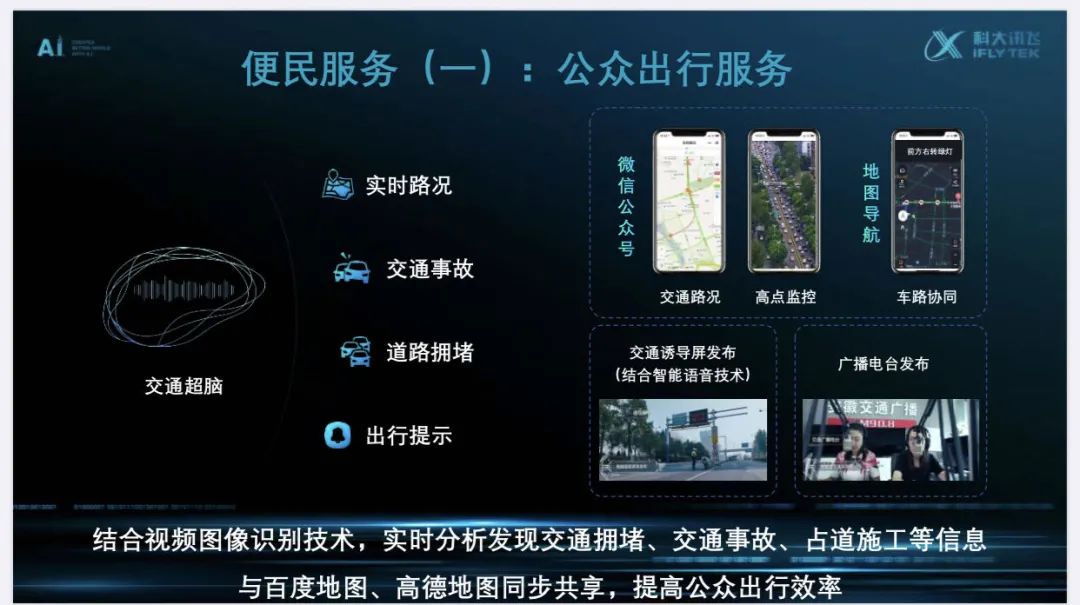
In addition to control, there is also a service issue. One is the public travel service, which releases all traffic travel information and is fully integrated with the traffic police's WeChat official account, Baidu AutoNavi map, traffic guidance screen, and traffic emergency broadcast, giving travelers a very good sense of gain. In the future, we also hope to publish real-time travel information about buses and rentals to every terminal device.
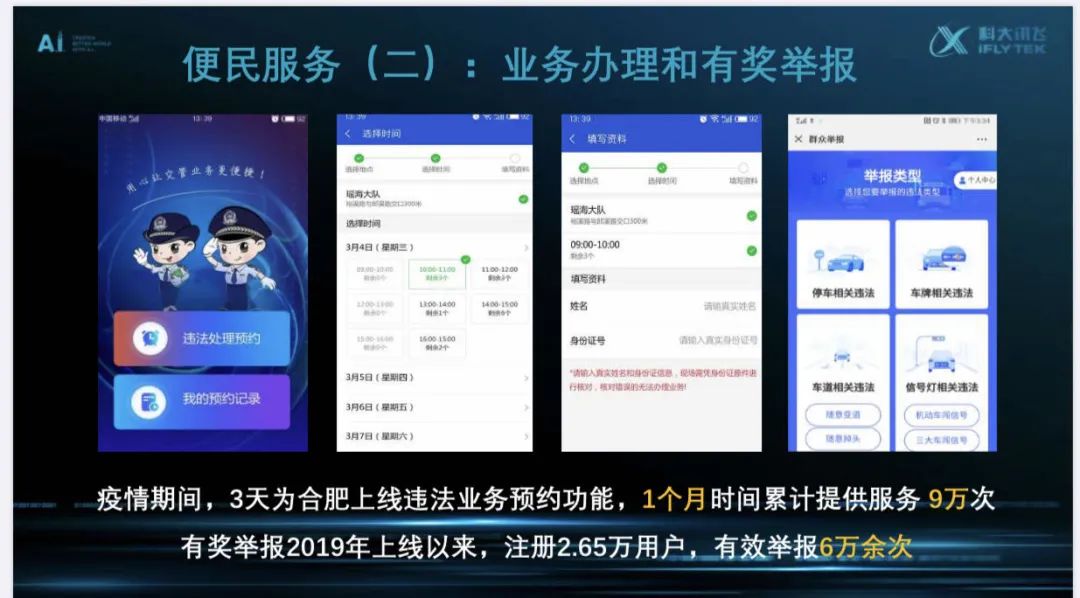
The second convenient service is the Internet. People can also use it as a channel for police-citizen communication and police-citizen feedback. We have designed a mass report earlier in Hefei. After the report is completed, it can be reported through various forms such as red envelopes. Cashback greatly stimulates everyone's enthusiasm for participating in the traffic management process.
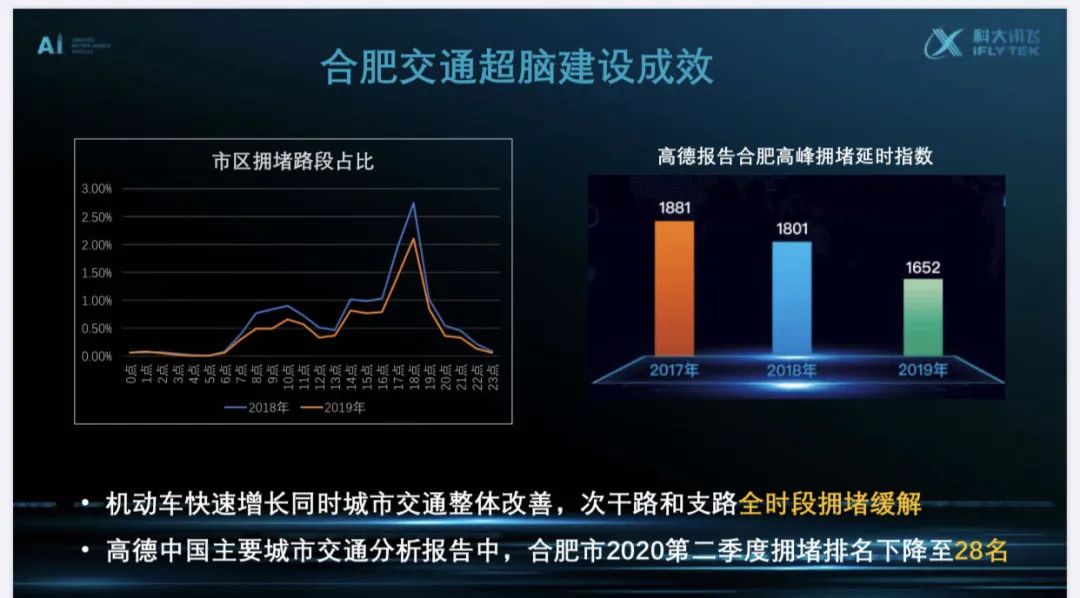
Finally, I would like to briefly report to you the results of the construction of Hefei Traffic Super Brain. At present, the growth of motor vehicles in Hefei is about 20% to 30% per year. During this rapid growth process, the congested roads in the urban area have been fully alleviated, and the proportion of congested roads has declined across the board. In Baidu, AutoNavi, etc. According to third-party analysis, Hefei's peak congestion delay index has been declining for three consecutive years, and you can also see in the analysis report that Hefei's congestion ranking has been on a downward trend, which is very good for us. One point, because we know that the number of congested construction sites in Hefei has increased from more than 30 in 2018 to more than 70 now due to the construction of subways. However, under such circumstances, our congestion rate is still declining, which cannot be achieved without us. Smart transportation has done some work.
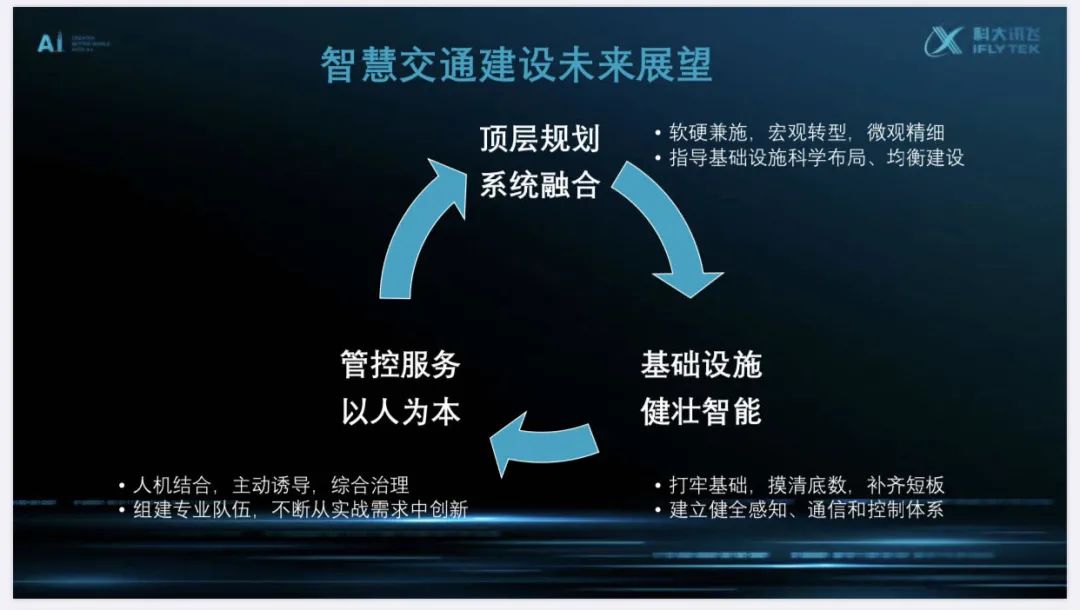
Let’s briefly look into the future. Academician Li (Li Dehong) just made a good point. What is often ignored in today’s transportation is planning and top-level design, as well as the process of adhering to this top-level design. If the top-level planning cannot be systematic and integrated, there must be problems with infrastructure construction and layout. Only when the top-level planning is done well can our infrastructure construction be a balanced construction that takes into account all factors. After the infrastructure is strong, we can have a more comprehensive perception system, and a more comprehensive and detailed control and communication system. On this basis, we can become intelligent.to doArtificial intelligence assists human experts to provide intelligent management and control services. Only in this way can a management and control service be innovated and improved in actual combat. After improvement, new accumulation and wisdom can be applied toWhere to go?Still want to come back to meIn our top-level planning process,Form a continuous iterative process, we do artificial intelligence, and we especially like to talk about whetherContinuously iterate and optimize, we also hope that artificial intelligence can help our cities and helpHelp our world continue to progress and become moreBetter and smoother.
That’s my speech today, thank you all.
Smart City Network (www.scitycase.com) - continues to pay attention to the development of smart cities.
